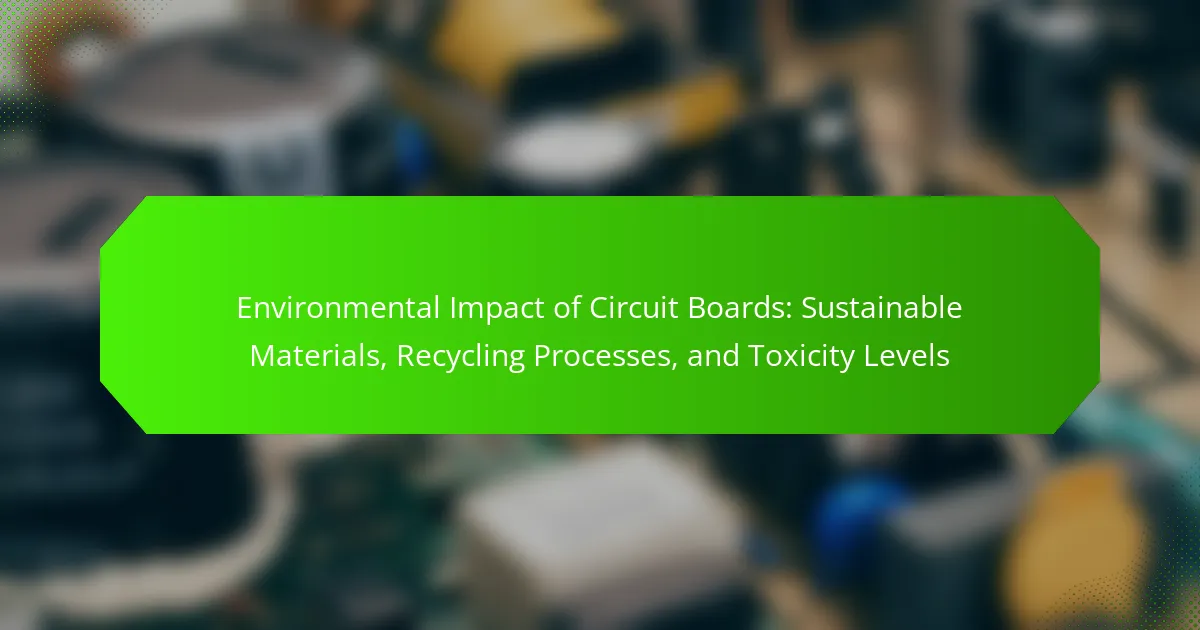The article evaluates the sustainability of solar panel manufacturing, focusing on three key aspects: raw material sourcing, energy efficiency, and end-of-life options. It highlights the environmental impacts associated with solar panel production, including resource depletion, energy consumption, and waste generation. Sustainable practices, such as using recycled materials and renewable energy sources, are discussed as essential for minimizing pollution and carbon emissions. Additionally, the article emphasizes the importance of responsible end-of-life management to prevent landfill waste and promote recycling. By adopting these sustainable practices, stakeholders can enhance the overall lifecycle sustainability of solar panels and contribute to a circular economy in solar technology.

What is the significance of evaluating the sustainability of solar panel manufacturing?
Evaluating the sustainability of solar panel manufacturing is significant because it impacts environmental health and resource management. Sustainable practices in this industry reduce pollution and energy consumption. For instance, studies indicate that solar panel production can generate significant waste and carbon emissions. By assessing sustainability, manufacturers can identify ways to minimize these impacts. This evaluation also enhances the lifecycle management of solar panels. It includes raw material sourcing, energy efficiency, and end-of-life options. Sustainable sourcing of materials reduces the depletion of natural resources. Energy-efficient manufacturing processes lower operational costs and emissions. Finally, responsible end-of-life options ensure that solar panels do not contribute to landfill waste. Overall, evaluating sustainability fosters innovation and promotes a circular economy in solar technology.
How does raw material sourcing impact the sustainability of solar panel manufacturing?
Raw material sourcing significantly impacts the sustainability of solar panel manufacturing. The extraction and processing of materials like silicon, silver, and rare earth elements can lead to environmental degradation. For instance, mining activities can result in habitat destruction and pollution. Moreover, the energy used in raw material extraction contributes to carbon emissions. Sustainable sourcing practices, such as recycling materials, can mitigate these effects. Studies show that using recycled silicon can reduce energy consumption by up to 90%. Thus, responsible sourcing is crucial for enhancing the overall sustainability of solar panel production.
What are the primary raw materials used in solar panel production?
The primary raw materials used in solar panel production are silicon, metals, and glass. Silicon is the most important material, comprising about 90% of the solar cell’s composition. It is derived from quartz sand, which is abundant and widely available. Metals such as silver and aluminum are also essential. Silver is used for electrical contacts, while aluminum serves as the frame for panels. Glass is used to protect the solar cells and enhance light transmission. Together, these materials enable the efficient conversion of sunlight into electricity.
How does the extraction of these materials affect the environment?
The extraction of materials for solar panel manufacturing significantly affects the environment. Mining operations can lead to habitat destruction and soil erosion. The process often involves the use of toxic chemicals, which can contaminate local water supplies. For instance, the extraction of silicon involves energy-intensive processes that contribute to greenhouse gas emissions. Additionally, the mining of rare earth elements, essential for some solar technologies, can result in substantial land degradation. According to a study by the International Renewable Energy Agency, the environmental impact varies depending on the material and extraction method used. These factors highlight the importance of sustainable sourcing practices in the solar industry.
What role does energy efficiency play in solar panel manufacturing sustainability?
Energy efficiency significantly enhances sustainability in solar panel manufacturing. It reduces energy consumption during production processes. Lower energy use leads to decreased greenhouse gas emissions. Efficient manufacturing techniques can cut operational costs. This makes solar panels more affordable and accessible. Studies show that energy-efficient production can lower carbon footprints by up to 30%. Additionally, integrating renewable energy sources in manufacturing boosts overall sustainability. Therefore, energy efficiency is crucial for minimizing environmental impacts and promoting sustainable practices in solar panel production.
What are the energy consumption metrics for solar panel manufacturing processes?
The energy consumption metrics for solar panel manufacturing processes vary by technology and production scale. On average, the production of silicon-based solar panels consumes approximately 150 to 200 kWh per panel. This includes energy used in the extraction of raw materials, silicon purification, and cell fabrication.
For thin-film solar panels, the energy consumption is generally lower, around 100 to 150 kWh per panel. The energy intensity of manufacturing processes has been decreasing over time due to advancements in technology.
For instance, the National Renewable Energy Laboratory (NREL) states that energy efficiency improvements could reduce energy consumption by up to 30% in the coming years. Additionally, lifecycle assessments indicate that the total energy payback time for solar panels ranges from 1 to 4 years, depending on the technology and location of installation.
How can energy efficiency be improved in solar panel production?
Energy efficiency in solar panel production can be improved through advanced manufacturing techniques. Utilizing automated production processes reduces energy consumption. Implementing energy-efficient machinery further lowers energy usage during manufacturing. Additionally, optimizing the supply chain minimizes transportation energy costs. Employing renewable energy sources for production facilities enhances overall sustainability. Research indicates that integrating these practices can reduce the carbon footprint of solar panel production by up to 30%.
What are the end-of-life options for solar panels?
The end-of-life options for solar panels include recycling, repurposing, and disposal. Recycling involves breaking down the panels to recover valuable materials like silicon, glass, and metals. This process can reduce waste and conserve resources. Repurposing allows for the use of old panels in different applications, such as building-integrated photovoltaics or off-grid systems. Disposal is the last resort and should follow local regulations to minimize environmental impact. According to the International Renewable Energy Agency, recycling can recover up to 95% of materials in solar panels.
How do recycling processes contribute to sustainability in solar panel disposal?
Recycling processes significantly enhance sustainability in solar panel disposal by recovering valuable materials. These materials include silicon, silver, and glass, which can be reused in new solar panels or other products. Recycling reduces the need for virgin raw materials, thus conserving natural resources. It also minimizes waste sent to landfills, reducing environmental pollution. According to the International Renewable Energy Agency, recycling can recover up to 95% of the materials in a solar panel. Furthermore, recycling processes lower greenhouse gas emissions associated with manufacturing new materials. Overall, effective recycling contributes to a circular economy, promoting sustainability in solar energy systems.
What challenges exist in the end-of-life management of solar panels?
Challenges in the end-of-life management of solar panels include recycling difficulties, regulatory issues, and economic viability. Recycling processes for solar panels are complex due to the materials used, like silicon and metals. Many facilities lack the technology to efficiently recycle these components. Regulatory frameworks are often inconsistent, leading to confusion in compliance. Economic factors also play a role; the cost of recycling can exceed the value of recovered materials. Additionally, there is a lack of standardized procedures for disposal and recycling. This can result in improper disposal, contributing to environmental pollution. Overall, these challenges hinder effective end-of-life management for solar panels.

What are the environmental impacts of solar panel manufacturing?
The environmental impacts of solar panel manufacturing include resource depletion, energy consumption, and waste generation. The production process requires raw materials like silicon, which involves mining and processing. This extraction can lead to habitat destruction and water pollution. Manufacturing solar panels is energy-intensive, often relying on fossil fuels. This contributes to greenhouse gas emissions. Additionally, hazardous materials like cadmium and lead may be used in some panels. Improper disposal of these materials can contaminate soil and water. Life cycle assessments indicate that while solar panels reduce emissions during use, their manufacturing has significant initial environmental costs.
How does the carbon footprint of solar panel production compare to other energy sources?
The carbon footprint of solar panel production is generally lower than that of fossil fuel energy sources. Studies indicate that the lifecycle emissions of solar panels average around 20 to 50 grams of CO2 equivalent per kilowatt-hour (gCO2e/kWh). In contrast, coal-fired power plants emit approximately 800 to 1,000 gCO2e/kWh. Natural gas plants produce around 400 to 500 gCO2e/kWh.
The manufacturing process of solar panels involves energy-intensive steps, primarily during silicon production. However, advancements in technology have been reducing these emissions over time. Furthermore, solar panels generate clean energy during their operational life, offsetting initial carbon emissions.
Research by the National Renewable Energy Laboratory (NREL) shows that solar energy’s long-term benefits significantly outweigh its production emissions. Overall, solar energy is a more sustainable option compared to traditional fossil fuels.
What measures can be taken to reduce the carbon emissions associated with solar panel manufacturing?
Utilizing renewable energy sources in manufacturing processes can significantly reduce carbon emissions. Solar panel manufacturing often relies on fossil fuels, which contribute to greenhouse gas emissions. Transitioning to wind or solar energy for production can lower this impact. Implementing energy-efficient technologies in factories also plays a crucial role. These technologies can reduce the amount of energy consumed during production. Additionally, optimizing raw material sourcing can help minimize emissions. Using recycled materials instead of virgin resources reduces the carbon footprint associated with extraction and processing. Lastly, enhancing logistics and transportation methods can further decrease emissions. Efficient supply chain management reduces the carbon footprint of transporting materials.
What are the social implications of sourcing raw materials for solar panels?
The social implications of sourcing raw materials for solar panels include labor rights issues and environmental justice concerns. Many raw materials, such as cobalt and lithium, are mined in countries with poor labor standards. Workers often face unsafe conditions and low wages. This raises ethical questions about the sustainability of solar energy. Additionally, mining activities can lead to environmental degradation. Communities near mining sites may suffer from pollution and loss of land. These factors can exacerbate social inequalities. Studies indicate that responsible sourcing practices can mitigate these issues. For instance, companies implementing fair trade standards improve labor conditions. Overall, the sourcing of raw materials for solar panels has significant social consequences that require attention.
How do labor practices in raw material extraction affect sustainability?
Labor practices in raw material extraction significantly impact sustainability. Poor labor practices can lead to environmental degradation. For example, unsafe mining conditions often result in soil erosion and habitat destruction. Additionally, exploitation of workers can lead to social instability. This instability can hinder sustainable practices and community development. Furthermore, unsustainable extraction methods often deplete resources faster than they can be replenished. A study by the International Labour Organization highlights that ethical labor practices promote better environmental outcomes. Sustainable labor practices encourage responsible resource management, benefiting both the environment and local communities.
What are the community impacts of solar panel manufacturing facilities?
Solar panel manufacturing facilities can significantly impact local communities. They create job opportunities, which can reduce unemployment rates. The establishment of these facilities often leads to improved local economies. Increased tax revenues from these facilities can enhance public services. However, there can also be negative environmental impacts. Manufacturing processes may generate waste and emissions. This can affect air and water quality in nearby areas. Community engagement is crucial for addressing these concerns. Studies show that transparent communication can help mitigate negative perceptions.

How can stakeholders improve sustainability in solar panel manufacturing?
Stakeholders can improve sustainability in solar panel manufacturing by adopting environmentally friendly practices. They should prioritize sourcing raw materials from sustainable suppliers. This includes using recycled materials to reduce waste and lower the carbon footprint. Implementing energy-efficient production processes is essential. For instance, utilizing renewable energy sources can significantly decrease greenhouse gas emissions. Additionally, stakeholders must focus on the end-of-life management of solar panels. Developing effective recycling programs can ensure materials are reused and reduce landfill waste. According to the International Renewable Energy Agency, transitioning to sustainable practices can enhance the overall lifecycle sustainability of solar panels.
What best practices can manufacturers adopt to enhance sustainability?
Manufacturers can enhance sustainability by adopting practices such as using renewable energy sources. Transitioning to solar or wind power reduces carbon emissions significantly. Additionally, optimizing raw material sourcing is crucial. This can involve using recycled materials or sustainably sourced inputs. Implementing energy-efficient production processes also plays a vital role. Studies show that energy-efficient methods can reduce energy consumption by up to 30%. Furthermore, manufacturers should focus on end-of-life options for solar panels. Developing recycling programs can minimize waste and recover valuable materials. These best practices collectively contribute to a more sustainable manufacturing process in the solar panel industry.
How can collaboration among stakeholders lead to better sustainability outcomes?
Collaboration among stakeholders can lead to better sustainability outcomes by fostering shared knowledge and resources. When stakeholders, such as manufacturers, suppliers, and regulators, work together, they can identify best practices. This joint effort can optimize raw material sourcing, reducing environmental impact. Collaborative initiatives can also enhance energy efficiency through shared technologies and innovations. For example, partnerships can lead to the development of more sustainable production processes. Studies show that collaborative supply chain management can decrease waste by up to 30%. Additionally, stakeholders can align on end-of-life options for solar panels, ensuring proper recycling and disposal methods are implemented. This collective approach ultimately leads to a more sustainable solar panel manufacturing industry.
What innovative technologies are emerging in solar panel manufacturing for sustainability?
Innovative technologies emerging in solar panel manufacturing for sustainability include bifacial solar panels, perovskite solar cells, and recycling processes for end-of-life panels. Bifacial solar panels capture sunlight on both sides, increasing energy output. Perovskite solar cells offer high efficiency and lower production costs compared to traditional silicon cells. Advanced recycling technologies allow for the recovery of valuable materials from old panels, reducing waste. These innovations contribute to a more sustainable solar energy ecosystem by enhancing efficiency and minimizing environmental impact.
How do these technologies address current sustainability challenges?
Solar panel manufacturing technologies address current sustainability challenges by reducing resource consumption and enhancing energy efficiency. Advanced materials and processes minimize the use of rare or harmful raw materials. This shift lowers environmental impact during production. Energy-efficient manufacturing techniques also decrease overall energy use. For instance, solar panels can generate more energy than consumed in their production over their lifespan. Additionally, innovations in recycling technologies improve end-of-life options for solar panels. Studies show that effective recycling can recover up to 95% of materials. These advancements contribute to a circular economy, reducing waste and promoting sustainability.
What practical steps can consumers take to support sustainable solar panel practices?
Consumers can support sustainable solar panel practices by choosing products from companies that prioritize eco-friendly sourcing. Research solar manufacturers that use recycled materials in their panels. Look for certifications like the Cradle to Cradle certification, which indicates sustainable practices. Additionally, consumers should consider the energy efficiency ratings of solar panels before purchasing. Higher efficiency ratings contribute to lower overall energy consumption.
Supporting local solar companies can also minimize transportation emissions. Consumers can advocate for policies promoting renewable energy incentives. Participating in community solar programs helps increase solar adoption. Lastly, consumers should properly recycle or dispose of old solar panels to prevent environmental harm. These steps collectively enhance sustainability in solar panel practices.
The main entity of this article is the sustainability of solar panel manufacturing. The article evaluates the significance of sustainable practices in the solar industry, focusing on raw material sourcing, energy efficiency, and end-of-life options for solar panels. It discusses the environmental impacts of material extraction, the importance of energy-efficient manufacturing processes, and the challenges associated with recycling and disposal. Key insights include the benefits of using recycled materials, the role of innovative technologies, and practical steps consumers can take to support sustainability in solar energy systems.


